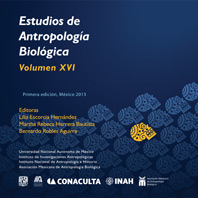Epidemics presence in the town of Iztapalapa
DOI:
https://doi.org/10.22201/iia.14055066p.2013.56705Keywords:
epidemics, Iztapalapa, demographic crisisAbstract
The objective of this research is to analyze the demographic crises suffered by the people of Iztapalapa in the period of 1760-1810 and relate sociocultural and ecological variables from a demographic anthropology approach. For this study were used as sources of quantitative information, the headings of baptisms and deaths registration of the Parish Church of St. Luke, which served as the head of this community. Demographic crises are important indicators in understanding the dynamics of past populations, and that impacted the amount, distribution, composition and growth. In colonial times in Mexico, epidemics were the main causes of these crises and their impact was different in ancient populations not only for its infectious process, but by its relationship to the social processes and economic structures, the applicability of knowledge about disease prevention and care in everyday life, the conditions of social inequality and the ecology of the place and the time of year they were presented, but it is very difficult to identify all the health-disease process of past society through written sources. However, from my own analysis and using the historical reference of what happened in the Valley of Mexico in the late Eighteenth Century, in Iztapalapa were identified only the following epidemics: matlazáhuatl (1761-1762), measles (1768), famine (1783-1785) and smallpox (1779 and 1797), although for the early Nineteenth Century, it was not possible to accurately detect outbreaks. The impact of this crisis affected the slow natural population growth mainly by the late Eighteenth Century and could only be identified outbreaks and their effect on the composition and structure of the population.
Downloads
Downloads
Published
How to Cite
Issue
Section
License

http://creativecommons.org/licenses/by-nc-nd/4.0/


